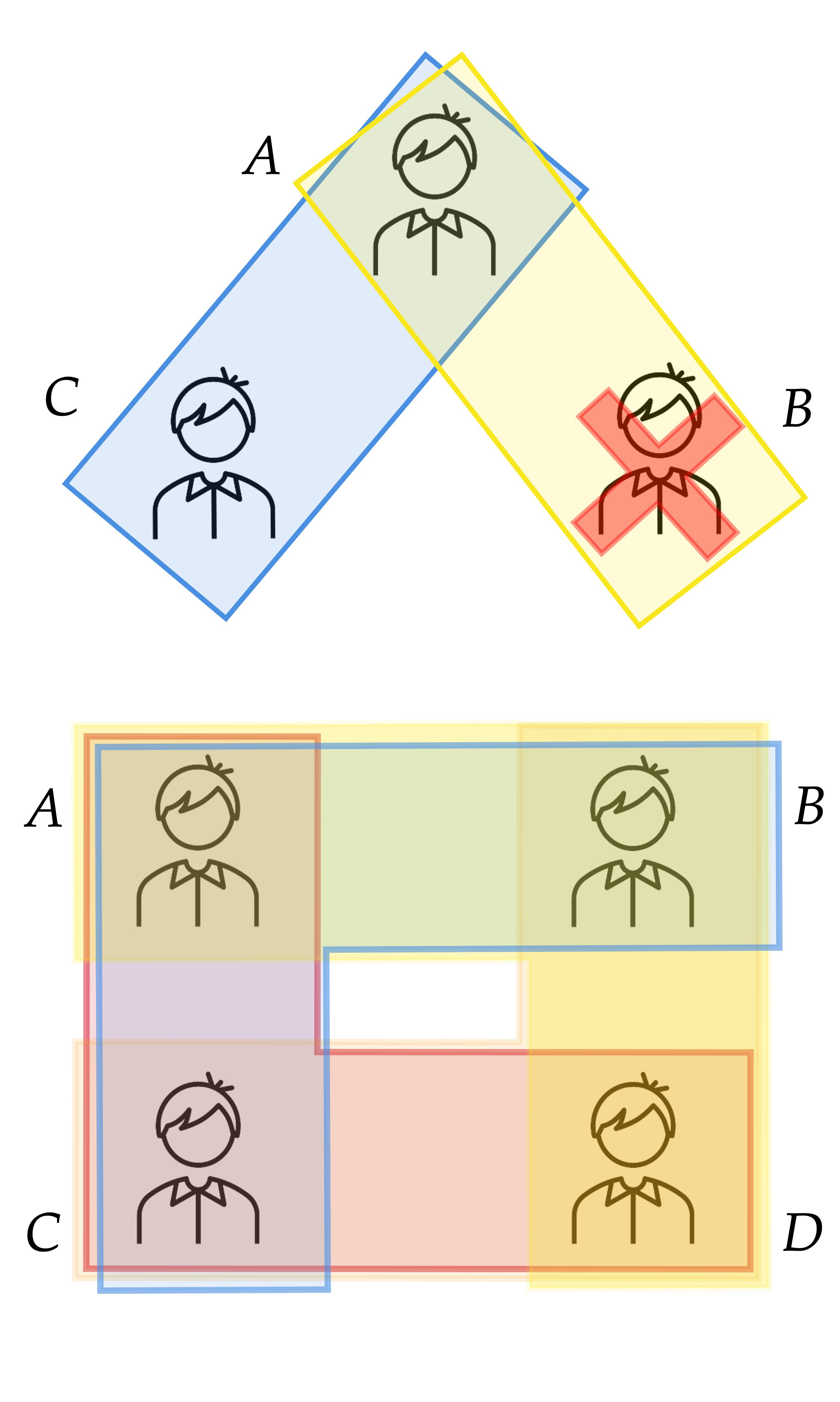
Monogamy is not a fundamental feature of nature at all - at least not when it comes to quantum non-locality, shows Polish research published in the prestigious PNAS. Apart from being a huge surprise for physicists, these results have significant consequences for communication, security and testing of quantum networks.
Some quantum particles exhibit very strong connections between themselves (called correlations). If prepared properly, particles can share certain properties such as polarization or spin. The connection between them is so strong that if something happens to one of these particles - another can 'notice' it immediately, wherever it is. This phenomenon is referred to as quantum non-locality, which Einstein referred to as 'spooky action at a distance'.
SPOOKY INTERACTION IN GROUPS
Quantum non-locality is not exactly the same as quantum entanglement of particles. It has long been known that a great many particles can be in an entangled state at the same time - this property is used, for example, in quantum computers. When we look at the particles described by this state separately, not all of them have to be interconnected.
Imagine that particles are grouped in such a way that each particle is in several groups. Until now, it seemed that if we observe non-locality - a unique bond - in one group (which manifests itself in the violation of the so-called Bell inequality), then we cannot simultaneously observe such a bond in another group. This has been called monogamy of non-locality.
'The concept of monogamy in Bell inequality violations has been regarded as a fundamental feature of quantum theory. However, in our manuscript, we (…) devise a systematic methodology providing examples of simultaneous Bell non-locality detection in multipartite systems', the physicists begin their paper in PNAS.
The discovery was made by researchers from the University of Gdańsk, in collaboration with experimenters from LMU in Munich and MTA in Debrecen. (Open access preprint).
Scientists led by Professor Wiesław Laskowski are the first in the world to demonstrate that polygamy occurs among particles - they can be strictly quantum correlated in all larger groups simultaneously. 'And the more particles, the stronger these correlations are. All we had to do was come up with a way to observe these dependencies', Professor Laskowski told PAP.

WHAT PARTICLES DO IN THE SHADOWS
'We show that hunches or intuitions in science must always be verified, especially experimentally', doctoral candidate Paweł Cieśliński tells PAP. This is because the hypothesis of universal quantum monogamy, which seemed obvious to physicists, can no longer be confidently maintained in the light of new experimental research. Researchers have shown quantum non-locality polygamy in action.
'The concept of monogamy results solely from the fact that certain special mathematical expressions have been used to describe the world', Laskowski says. However, these expressions had their limitations and could be circumvented with other descriptions - more accurate ones. When you look at quanta from this other mathematical perspective, it turns out that monogamy is not a fundamental feature of the quantum world at all. So it is not the case that polygamy was allowed in the world of particles. Particles did it before, only in secret.
TRIANGLE OF SADNESS
How could physicists have missed this? There was evidence that quantum polygamy could not occur in a three-particle system. If in a system of particles A, B, C non-locality is observed between particles A and B, then it will not occur in pairs A and C or B and C. That - in the light of research published in PNAS - is still true. True monogamy occurs only in systems with three participants. However, it turns out that with a larger number of particles, the principle of monogamy of non-locality ceases to apply. The particles can then exhibit strong correlations in all possible configurations, which scientists have called 'polygamy'.
The researchers tested non-local dependencies between particles in various configurations. For example, in a four-particle system (ABCD), they tested every triplet (ABC, ABD, BCD). They found that correlations do indeed occur there. It was similar in systems of 5 particles, where every quadruplet was tested, and in a system of 6 particles, where every five was tested - this is the case that was experimentally investigated.
The theoretical predictions were confirmed experimentally on entangled photons at the LMU in Munich.
NON-LOCAL APPLICATIONS
Apart from their fundamental significance, the obtained results have promising applications in modern quantum technologies, including quantum cryptography, testing quantum devices and reducing communication complexity.
Doctoral candidate Cieśliński explains that quantum non-locality is treated as a resource in information processing. It is used to solve certain problems - primarily in the field of communication. Correlations are preserved despite separation. We can send one particle to one place, another - correlated one - to another place, and use them in parallel to solve problems.
Thanks to non-locality, it is possible to reduce the complexity of communication - reduce the amount of information sent between stations to solve certain problems. If several stations receive output data to solve a problem at the same time, they can solve it more efficiently.
As shown by a Polish physicist, Artur Ekert, quantum non-locality enables secure distribution of a cryptographic key. Standard protocols are based on communication between two parties. 'This new property that we have discovered may, however, help, for example, in agreeing on a conference key in multi-person communication', says Cieśliński.
'We may be able to apply these protocols, for example, where it is necessary to ensure security in communication between several parties at the same time - for example, several banks, or an entity that makes a transfer, a bank, and the transfer recipient', adds Professor Laskowski.
Another important application may be testing the credibility of devices that we use in communication. If we want to be sure that the manufacturer of devices used in communication is trustworthy, we can use non-locality polygamy to test the credibility of devices that we use on the fly, during communication. Professor Tomasz Paterek from the University of Gdańsk and student Mateusz Kowalczyk were also involved in the research project. The paper was created in collaboration with Professorld Weinfureter and Dr. Lukas Knips (LMU in Munich),and Dr. Tamas Vertesi from MTA in Debrecen. The research was financed by the Polish Science Centre.
PAP - Science in Poland
lt/ zan/ kap/
tr. RL













